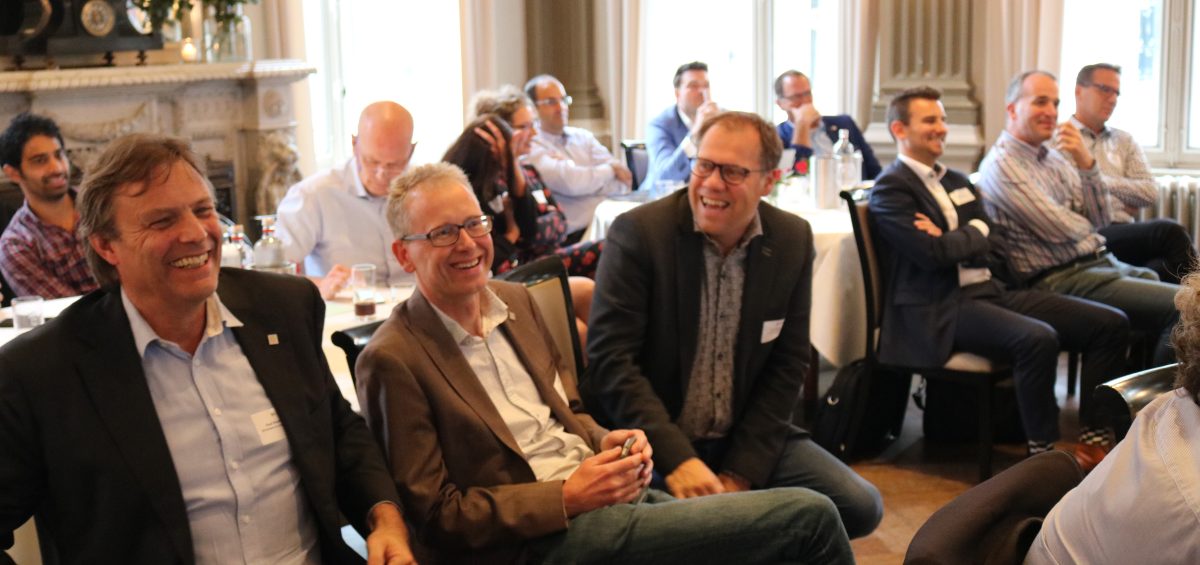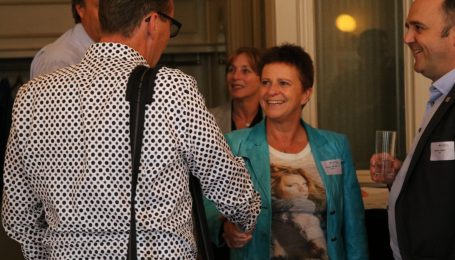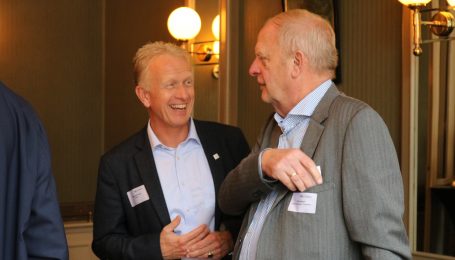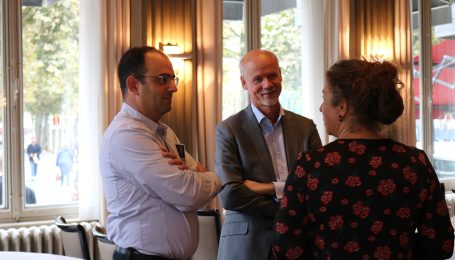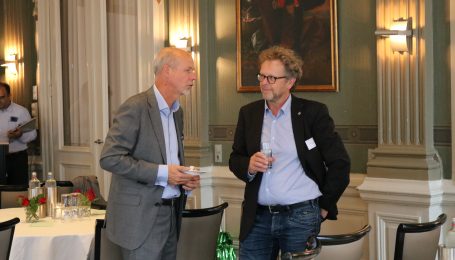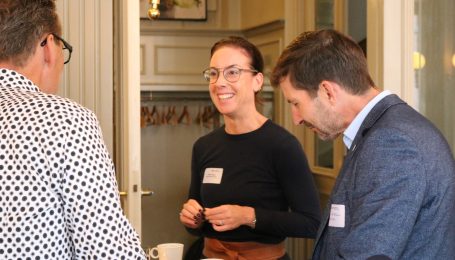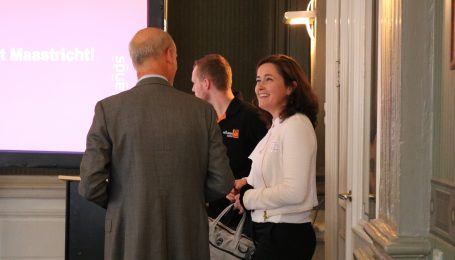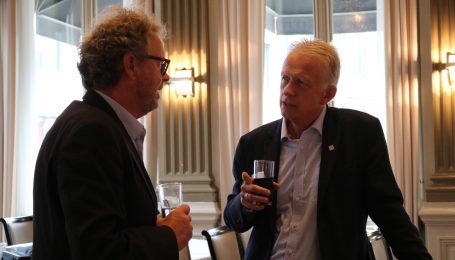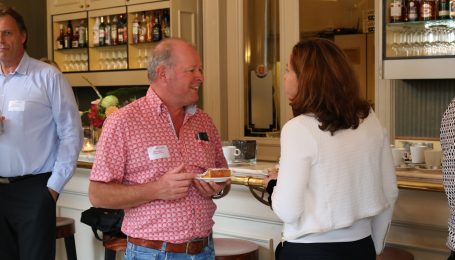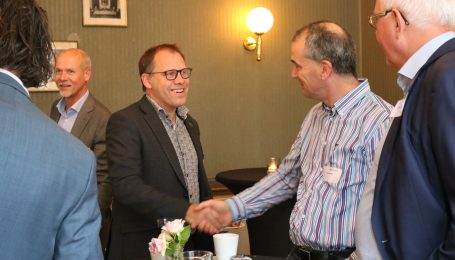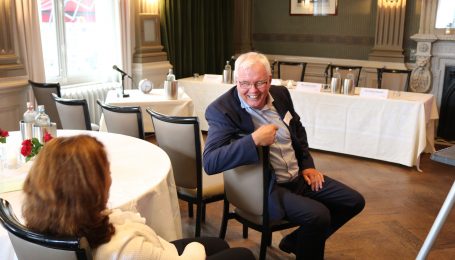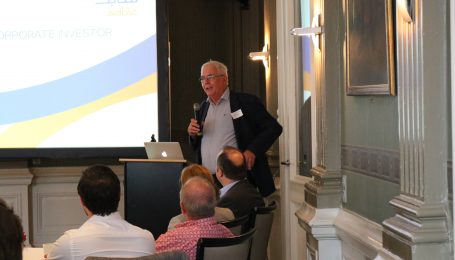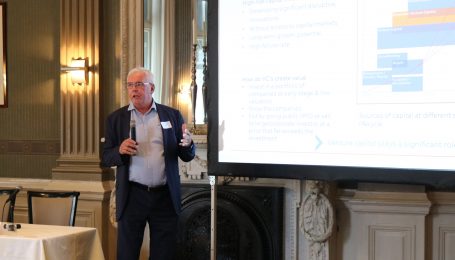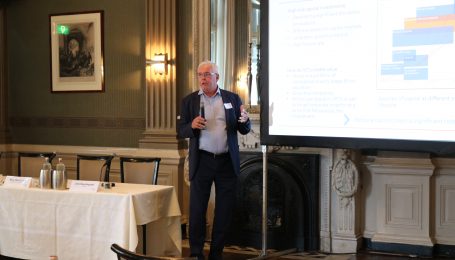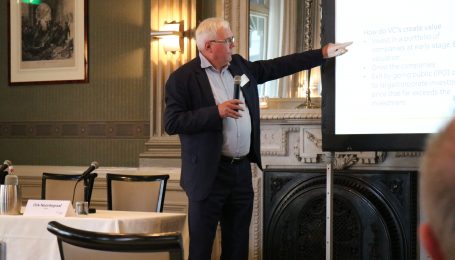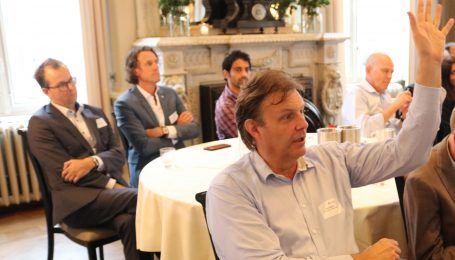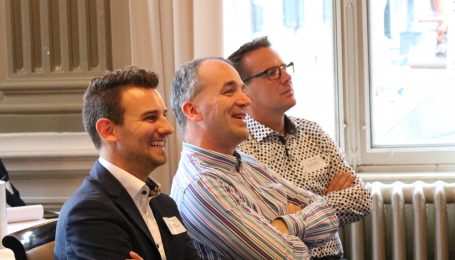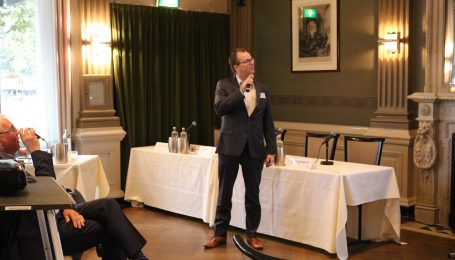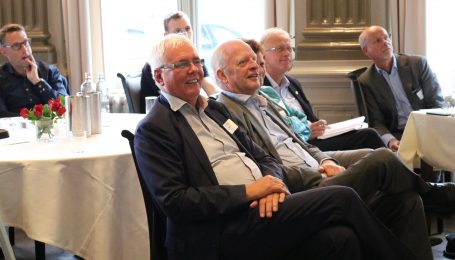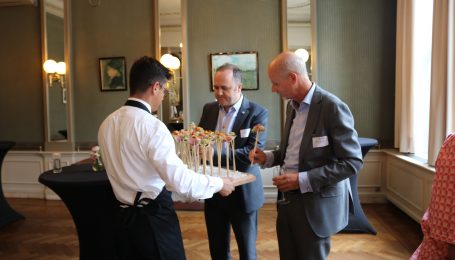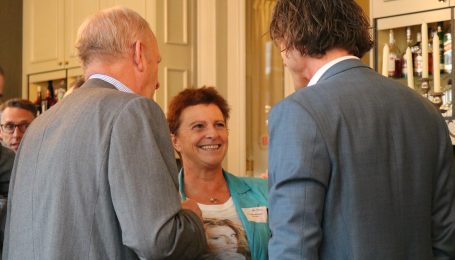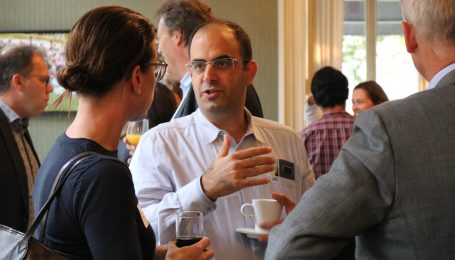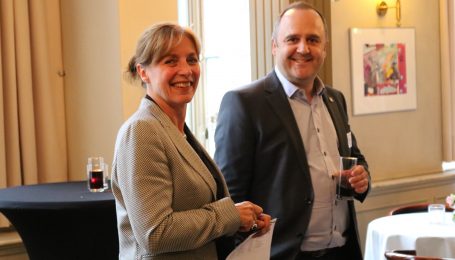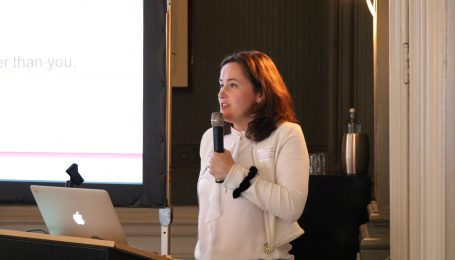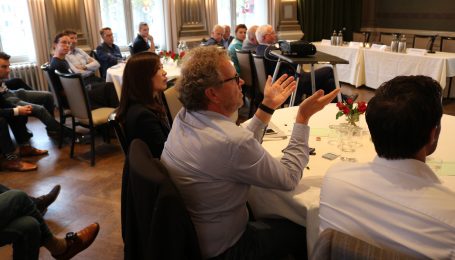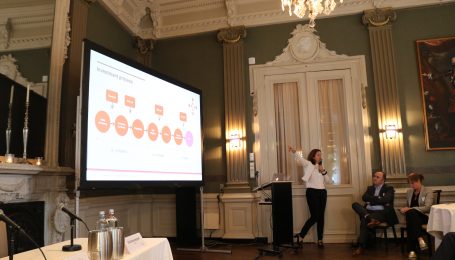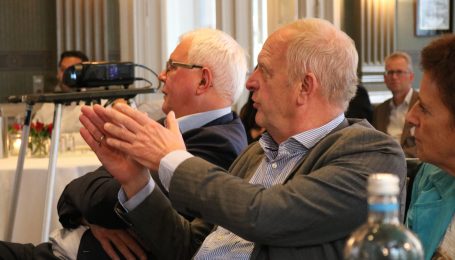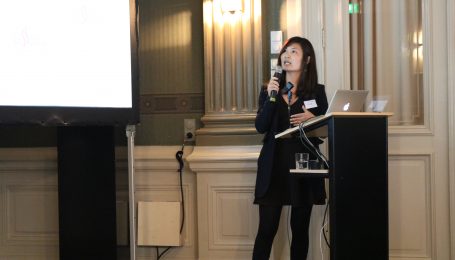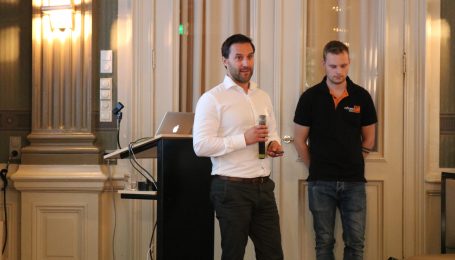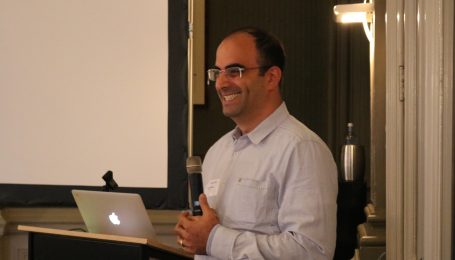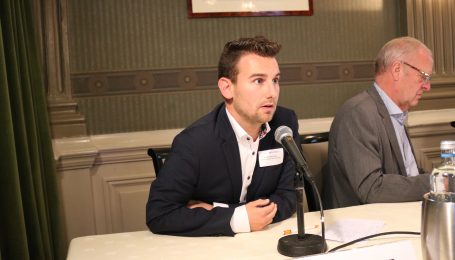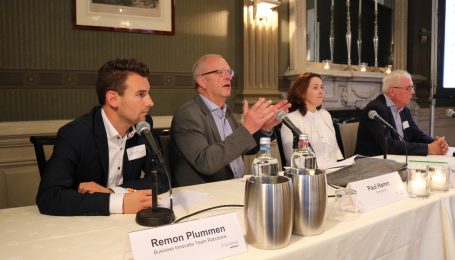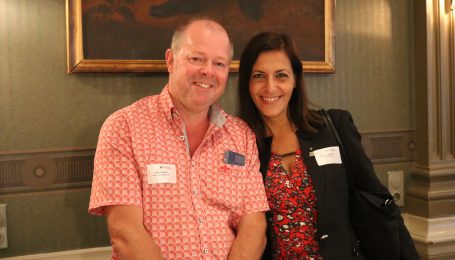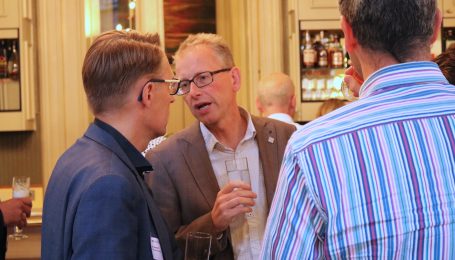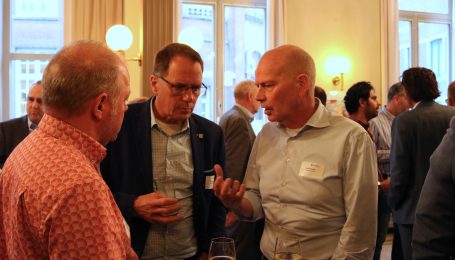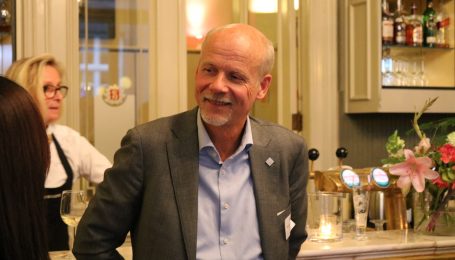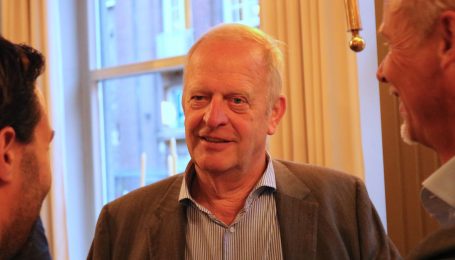Dirk Noordegraaf from SABIC Ventures explained what High-risk Capital Investments SABIC Ventures initiates and manages. The investments always are for significant disruptive innovations. Parties in this phase are, among other things, characterized by their difficulty in accessing the capital markets. In addition, the risk of failure is still very high. In this context, SABIC asks the following questions:
– What is the role of the organization and what can this mean for SABIC?
– How disruptive is the technology?
– What additional benefits can SABIC offer for investments apart from the business case?
Dirk Noordegraaf ended his presentation with some appealing innovations they funded. Out of the 500 innovations, an average of 7 was awarded.
Richard van de Snoek of the Rabobank Business Innovation Team Limburg started his presentation by explaining the differences between a startup and a scale-up. He summed up the various ways of financing: from friends and family to private equity. Rabobank classifies the forms of financing for small and medium-sized businesses depending on the size of the financing requirement and the life phase of the company.
The company’s plans are then transformed into a Canvas business model to test the value in reality. The Capital provisions sheet gave the entrepreneurs an idea of the options that are currently available within Rabobank. In response to a question from the audience, it was explicitly stated that not only Rabobank customers can apply.
Mary MacCarthy of Brightlands Venture Partners asked those present what aspects they want to see in an investor. Hereafter she indicated what investors are looking for when looking for a company. Investors select on a strong management team, on real innovations, on growth ambitions of the company and upscaling possibilities They look for companies with a clear horizon of 5 to 7 years and a strict commercially driven plan. In addition, having an exit strategy to subsequently generate a return for the investor is decisive. The latter led to discussion in the room. Ultimately, investors are looking for a credible, confidence-inspiring and pragmatic case.
Brightlands Venture is an independent fund that manages € 75 million. Currently 37 investments in portfolio.
Mary’s recommendations to entrepreneurs:
- Find the right investors that suit your situation
- Do your homework (familiarize yourself with your investor in advance)
- Work with investors and don’t let the deal prevail in the process
- Prepare your current business figures and forecasts well
- Investments take a lot of time; calculate that in:
2 – 5 months: initial screening
2 – 5 months: due diligence and closing deal
3 – 7 year: portfolio management and exit
Pitching session with forum
- Rong Wang from EGGxpert explains the production process of a skin product and the markets that they can serve.
- Monica Schlösser Shape3dup started her business in 2015: 3d printing of PRINTBOOBS. One in seven women has to face breast cancer. Shape3dup is now in phase that printed boobs are going into production.
- Michael Boot (CEO); Vertoro Sustainable makes oil from lignin (produced by nature). Not yet on a large scale in the market.
- Roland Marherb, Flux Ai (e-commerce). Problem definition: improving sales and services on internet platforms. An artificial intelligent flux bot increases sales with 5%. The application is cloud-based. Flux AI wants to launch on Shopify in January 2020. They are looking for an investor who can join in 2 months. Opportunity: 1st year 500,000, 2nd year 1.1 million, 3rd year 2 million.
Questions from Forum to the pitchers:
- What is your value proposition, how unique is your product?
- Where is your priority now?
- At what quantities does it become interesting for an investor?
- What problem do you solve?
- Who wants to buy your idea?
- How do you get the numbers? Support the assessment of the value of your company.
- Who are your competitors?
- Why is your process unique?
Tip: Start the pitch by answering the most important questions!

